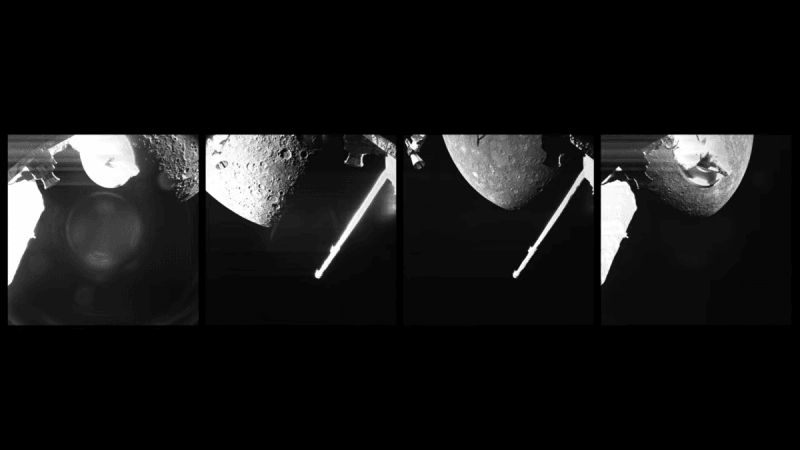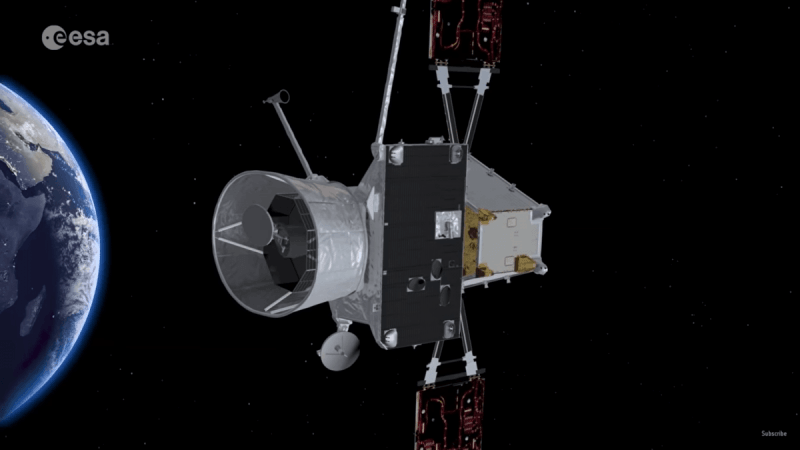Mercury has been photographed up close for the first time by the BepiColombo spacecraft. It returned some beautiful images after passing within 200 kilometres of Mercury's surface.
Mercury's surface is characterised by explosive volcanoes and odd, distinctive hollows, as seen by photographs. The fields of view of surveillance cameras two and three tracked across the planet during BepiColombo's initial Mercury swing-by.

What the photographs revealed
Camera three provided views of the southern hemisphere, starting with a sunrise above Astrolabe Rupes, a 250-kilometre-long lobate scarp.
A broader region was shown four minutes later, including the 251km-wide Haydn crater and Pampu Facula, one of several bright spots presumably created by powerful volcanic eruptions.
Camera two focused on Mercury's northern hemisphere, particularly the area around Calvino crater, a key location for studying Mercury's crust. It also showed the Lermontov crater, a brilliant area with volcanic deposits and "hollows" where a mystery volatile component of the crust is lost to space.
Until very late in the mission planning process, it was expected that BepiColombo would be "flying blind" for its entire Earth cruise, including swing-bys, with no pictures accessible until Mercury orbit was attained. By the end of 2016, it was decided that the craft will include three tiny monitoring cameras, each measuring 6.5cm. During swing-bys, they would take planetary photos.

The BepiColombo spacecraft
It is a collaborative effort between the European and Japanese space agencies - swung past the planet Mercury in the early hours of October 2, 2021.
After six swing-bys of Mercury, the spacecraft's velocity will be reduced to the stage where it can enter orbit around Mercury towards the end of 2025 due to the planet's gravity.
A propulsion unit connects two linked spacecraft in BepiColombo. The Mercury Planetary Orbiter (MPO) is connected to the interplanetary propulsion unit (or Mercury Transfer Module) on one side throughout its interplanetary voyage. In addition to the sun shield, it contains a Japanese orbiter called Mio (or "Mercury Magnetospheric Orbiter").
This stacked arrangement blocks the apertures for MPO's advanced visible, infrared, and X-ray cameras once it is free-flying.
BepiColombo began its voyage away from Earth in October 2018 and its mission is far from done.














